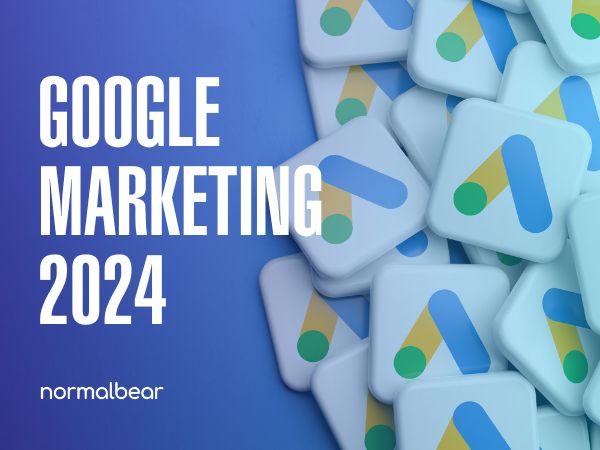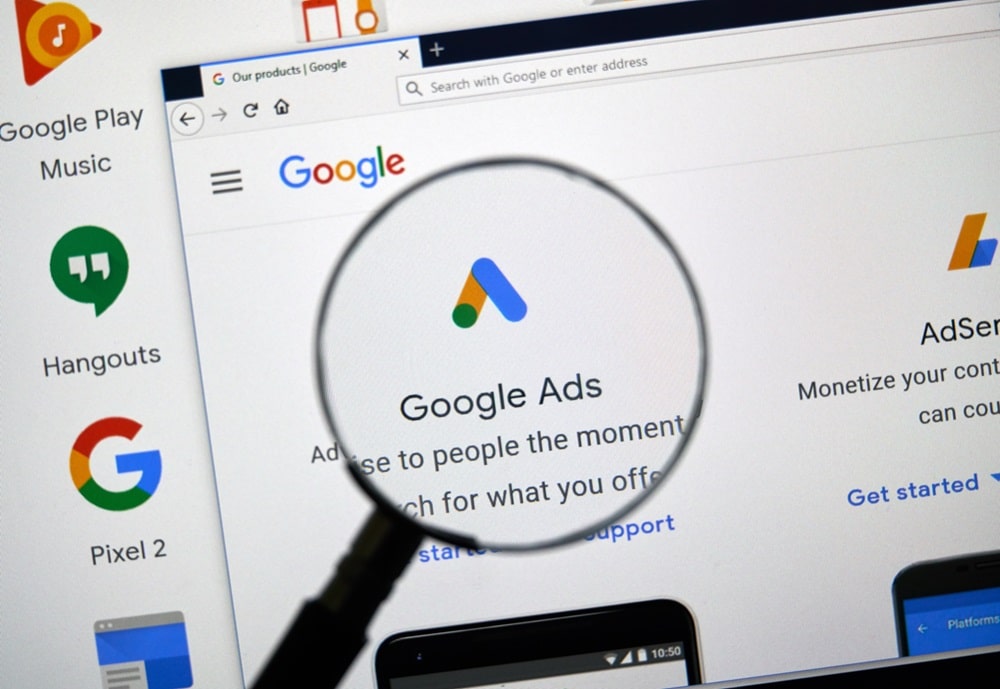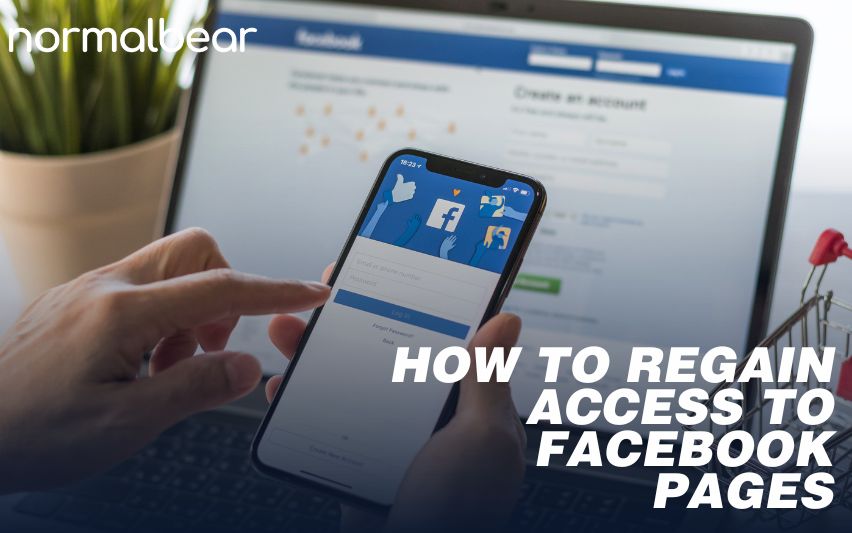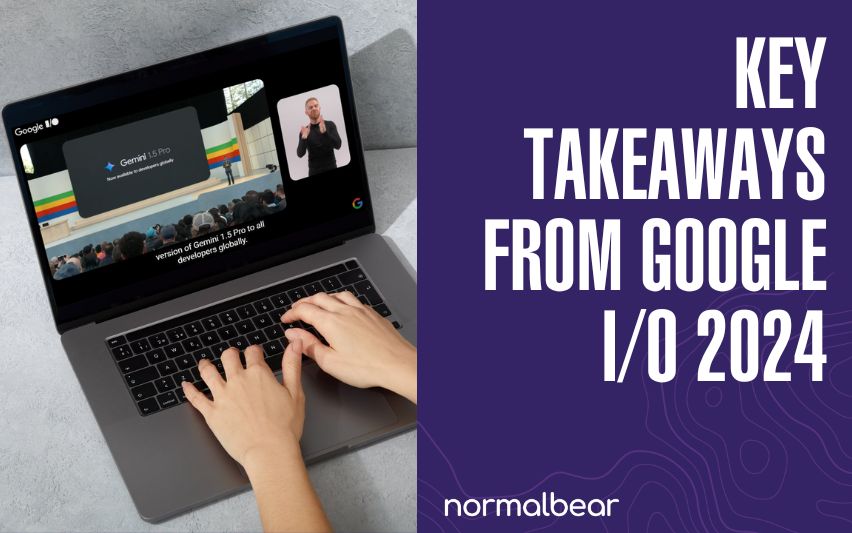Social media has become a crucial aspect of modern-day business and marketing. With billions of active users across various platforms, it offers a vast audience for businesses to target and showcase their products or services. However, with frequent changes and updates, it can be challenging for companies to stay on top of the latest trends and best practices. In this article, we will explore the recent developments in the world of social media and provide tips on how businesses can use them to their advantage.
The Challenge of Keeping Up with Social Media Content
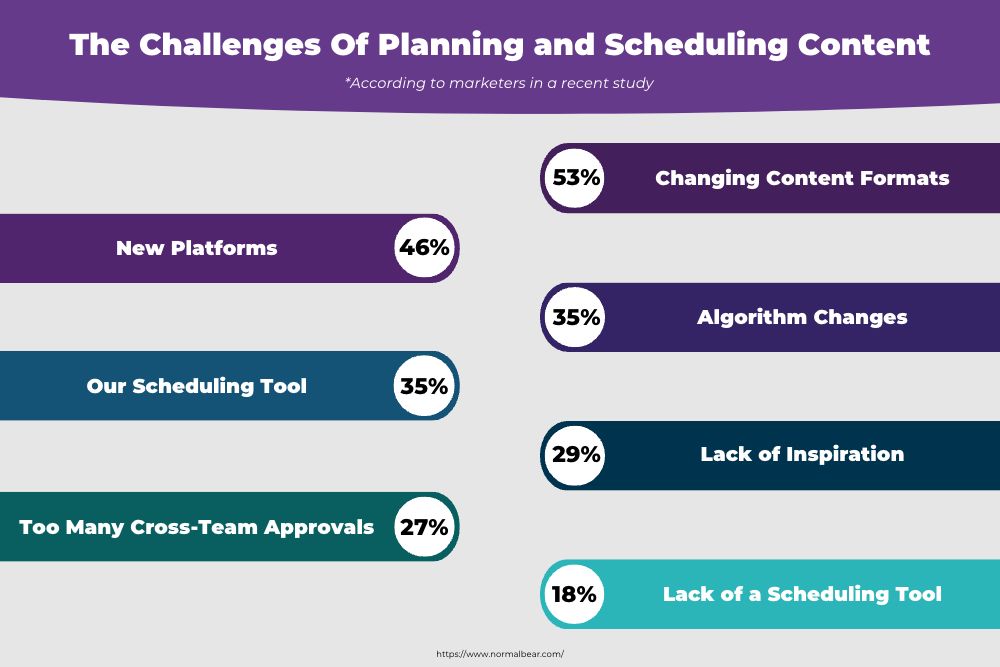
The top 3 biggest challenges to marketers all stem from the rapidly changing landscape of social media and content as a whole, and it’s not even close. Over half of the marketers mentioned that changes in format pose a challenge, and nearly half mentioned the introduction of new platforms. Additionally, over a third of marketers cited changes in social media algorithms as a challenge. These challenges highlight the need for marketers to continuously adapt and evolve their strategies to stay ahead in an ever-changing industry. This is difficult no matter how you look at it, but there are some things that you can do to make the transitions easier. One huge key to successfully navigating any changes in social media is to continually put effort into understanding your audience. This will allow you to stay focused and to bring your followers content that resonates, no matter the style or platform.
Social Media Posting Frequency
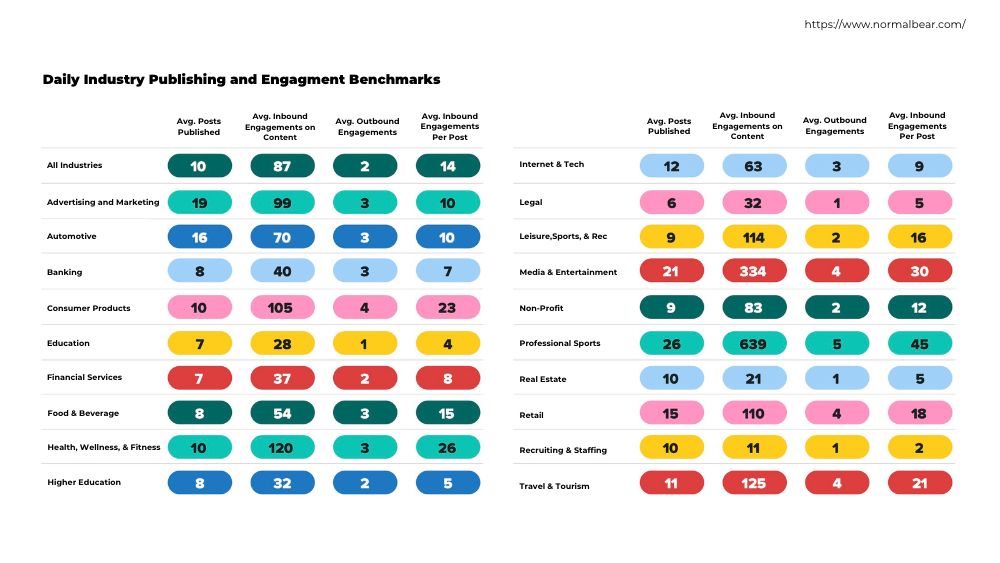
The frequency of social media posts is a crucial aspect for businesses and marketers to consider. Posting too frequently can overwhelm followers and lead to decreased engagement while posting too infrequently can result in a lack of visibility. Determining the ideal posting frequency varies for each business, as it depends on factors such as the size of the audience, the type of content being posted, and the overall goals of the social media strategy. However, research has shown that a consistent posting schedule and a frequency of 1-2 times per day can lead to increased engagement and better results. It is important for businesses and marketers to regularly evaluate and adjust their posting frequency to ensure they are maximizing their social media presence.
The Power of Visual Content
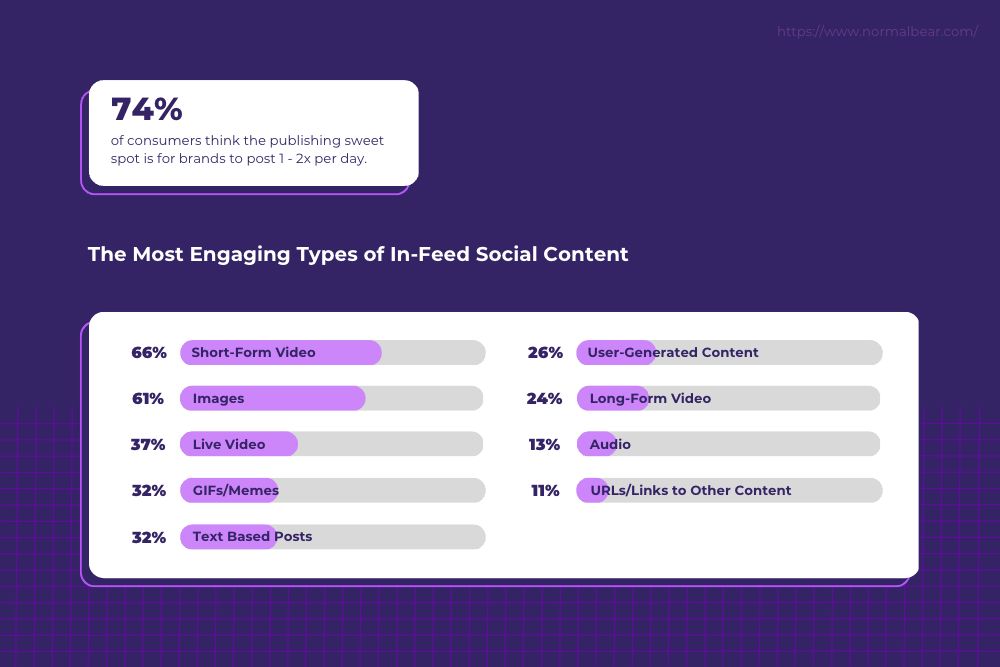
Visual content is proving to be a crucial component of any social media strategy, and marketers who take advantage of this trend are well-positioned for success. Using a mix of visual content such as images, videos, GIFs, and infographics can help businesses and marketers stand out on social media and increase engagement with their target audience. In addition, posts containing visual content are often more likely to be shared and liked, increasing the reach of the content and helping to expand the brand’s online presence. In short, the use of visual content in social media can lead to better engagement, increased brand awareness, and a more memorable experience for the audience.
Images
Images are a widely used form of visual content in marketing and advertising. They can be in the form of photographs, illustrations, or infographics, and serve as a way to showcase products, tell a story, or add visual interest to a message. Infographics, in particular, are a popular type of image that combines graphics and text to present information in an easy-to-understand and visually appealing manner. The use of images in social media posts has been shown to increase engagement, with posts containing images receiving more likes and shares compared to text-only posts.
Videos
Videos are a versatile and effective tool for businesses and marketers to engage with their target audience. From explainer videos to product demos and live videos, businesses can use video to share information, tell a story, and demonstrate their offerings. Videos are particularly effective for creating an emotional connection with the audience and can help to increase brand awareness and drive conversions. The popularity of video content on platforms such as YouTube, TikTok, and Instagram makes it a crucial component of any social media strategy.
GIFs
GIFs are short, animated, or moving images that are widely used in social media, messaging apps, and other online platforms. They offer a fun and engaging way to communicate with an audience and can be used to express emotions and reactions or provide a visual representation of a message. GIFs are quick to load and are often used in place of traditional images or videos, making them a great option for marketers looking to grab their audience’s attention.
Charts and Infographics
Charts and graphs are a form of data visualization that allows businesses and marketers to present information in a clear and concise manner. From pie charts and bar graphs to line charts and scatter plots, these visuals are used to illustrate trends, relationships, and patterns in data. They are particularly useful for presenting complex information in an easy-to-understand format and are commonly used in presentations, reports, and marketing materials.
Screenshots
Screenshots are a simple but effective type of visual content that can be used to show examples of software or website interfaces or to demonstrate a specific feature or process. They are often used in tutorial or review articles, as well as in social media posts and email marketing campaigns. Screenshots provide a clear and direct way to illustrate a message or provide visual context and can help to simplify complex ideas and make them easier to understand.
Memes
Memes are humorous images or videos that are often paired with captions or text and are widely shared on social media and other online platforms. They can be used to entertain, comment on current events or pop culture, or make a point in a lighthearted way. While memes may not be a suitable form of visual content for all businesses, they can be an effective way to connect with a younger, more casual audience and to show a different side of a brand’s personality.
Presentations
Presentations are a type of visual content that uses slides to convey information or tell a story. They can be used for a variety of purposes, including presentations at conferences, internal meetings, and sales pitches. Presentations offer a structured and visually engaging way to communicate information and can be a powerful tool for businesses and marketers to get their message across. With the widespread use of tools such as PowerPoint and Google Slides, presentations have become a common form of visual content in the business world.
Interactive Content
Interactive content is a type of visual content that allows the audience to interact with it in some way. This can include quizzes, polls, interactive infographics, and more. Interactive content provides an engaging and personalized experience for the audience, and can help to increase engagement and drive conversions. It is a great way for businesses and marketers to gather information from their audience and to create a two-way conversation, making it a valuable component of any marketing strategy.
How Brands Should Adjust Their Content Strategy to Keep Up With Social
When it comes to engaging consumers, short-form video continues to be a top performer, with 66% of consumers finding it engaging. Static images also hold strong, with 61% of consumers finding them engaging. These statistics indicate the importance of incorporating visual elements into your social media strategy.
But it’s not just about incorporating visuals, it’s about understanding your target audience and what type of content they are most likely to engage with. Staying on top of trends and utilizing data to inform your strategy can give you an edge in capturing the attention of your audience. In addition, using social listening tools can help you understand what topics and conversations your audience is interested in, so you can tailor your content to their interests.
Conclusion
In conclusion, social media is a dynamic and ever-changing landscape, but by staying informed and adapting to new trends and technologies, businesses can effectively use these platforms to reach their target audience and achieve their marketing goals. It’s essential to understand that social media is not just a one-time investment, but rather a continuous process of engagement and adaptation. By following the tips discussed in this article, businesses can stay ahead of the curve and make the most of the vast opportunities offered by social media.


